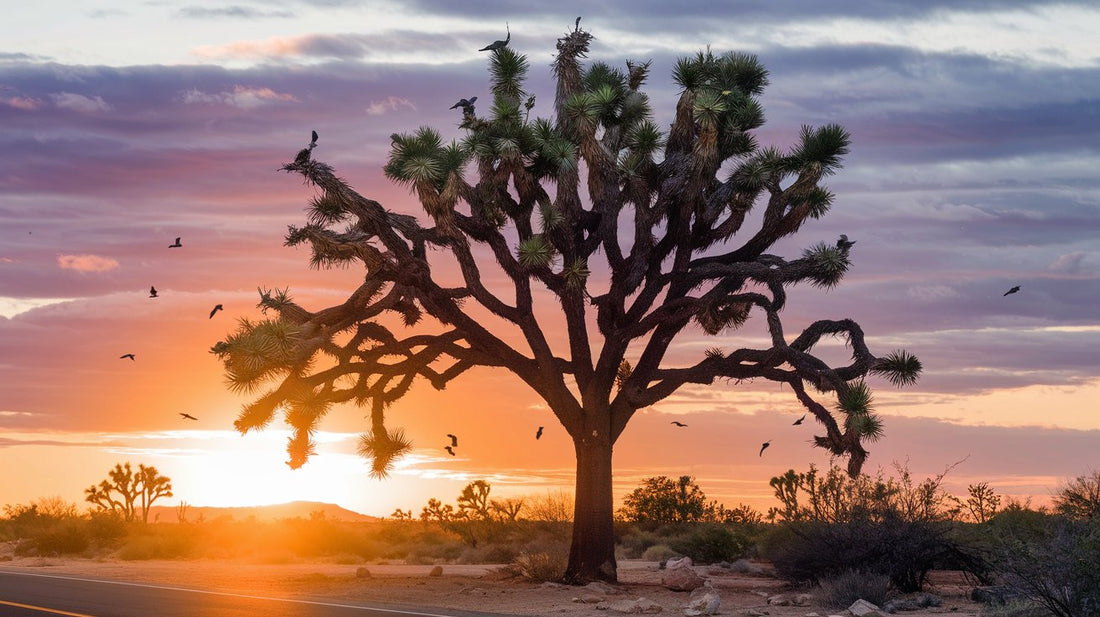
The Mojave Desert: A Journey to Joshua Tree’s Wonders
Share
Tucked away in the arid beauty of Southern California lies the Mojave Desert, a sprawling expanse of sun-soaked terrain that seems to stretch into eternity. At its heart is one of nature’s most iconic destinations—Joshua Tree National Park. This enchanting landscape, with its otherworldly Joshua trees, rugged mountains, and star-studded skies, offers a glimpse into the magical interplay between resilience and beauty in one of the harshest environments on Earth.
The Symbol of the Desert: Joshua Trees
Joshua trees (Yucca brevifolia) are not just plants; they are survivors. These spiky, twisting giants thrive in the harsh conditions of the desert, where temperatures often soar above 100°F and rainfall is scarce. Named by Mormon settlers who saw the tree’s outstretched branches as a gesture of prayer, the Joshua tree has become an emblem of the Mojave Desert.
What makes Joshua trees so remarkable is their ability to adapt. Their deep root systems seek out underground water, and their waxy leaves minimize moisture loss. Visiting the park during spring reveals their creamy white blooms, a rare and fleeting sight that signals the start of a new life cycle.
Landscapes Like No Other
Joshua Tree National Park spans over 790,000 acres, blending two distinct desert ecosystems: the Mojave and the Colorado. The result is a fascinating convergence of flora, fauna, and geological formations. Visitors can explore:
-
Hidden Valley: A natural rock-enclosed area rumored to have been a hideout for cattle rustlers. It’s a haven for rock climbers and hikers alike.
-
Cholla Cactus Garden: A surreal landscape filled with densely packed cholla cacti that shimmer golden at sunrise and sunset.
-
Keys View: Offering panoramic vistas of the Coachella Valley, Salton Sea, and even Mexico on a clear day.
Stargazing Haven
The Mojave Desert’s remote location and lack of urban light pollution make it a premier destination for stargazing. The park’s dark skies reveal the Milky Way in all its glory, along with countless constellations and shooting stars. For many, spending a night under this celestial canopy is a transformative experience.
The Wildlife
Despite the arid conditions, Joshua Tree is teeming with life. Desert tortoises, coyotes, roadrunners, and bighorn sheep are just a few of the creatures you might encounter. The park also supports a variety of bird species, including golden eagles and woodpeckers.
Tips for Visiting Joshua Tree
-
Plan Ahead: The park is vast, so identify key spots you want to explore and map your route.
-
Stay Hydrated: The desert heat can be intense. Carry plenty of water and wear lightweight, breathable clothing.
-
Respect Nature: Avoid disturbing plants and wildlife. Take only pictures and leave only footprints.
-
Pack for the Night: Temperatures drop sharply after sunset, so bring layers if you plan to stargaze.
Why Joshua Tree Captures the Heart
There’s a reason Joshua Tree has inspired artists, musicians, and nature lovers for decades. Its surreal landscapes, profound silence, and ability to make one feel both small and connected to the universe create an unforgettable experience. Whether you come for a day hike, a camping trip, or simply to find solace, the Mojave Desert’s Joshua Tree is a destination that stays with you long after you’ve left its sandy trails.
So pack your sense of adventure and head to this desert gem. Joshua Tree awaits with open arms and endless wonders.
